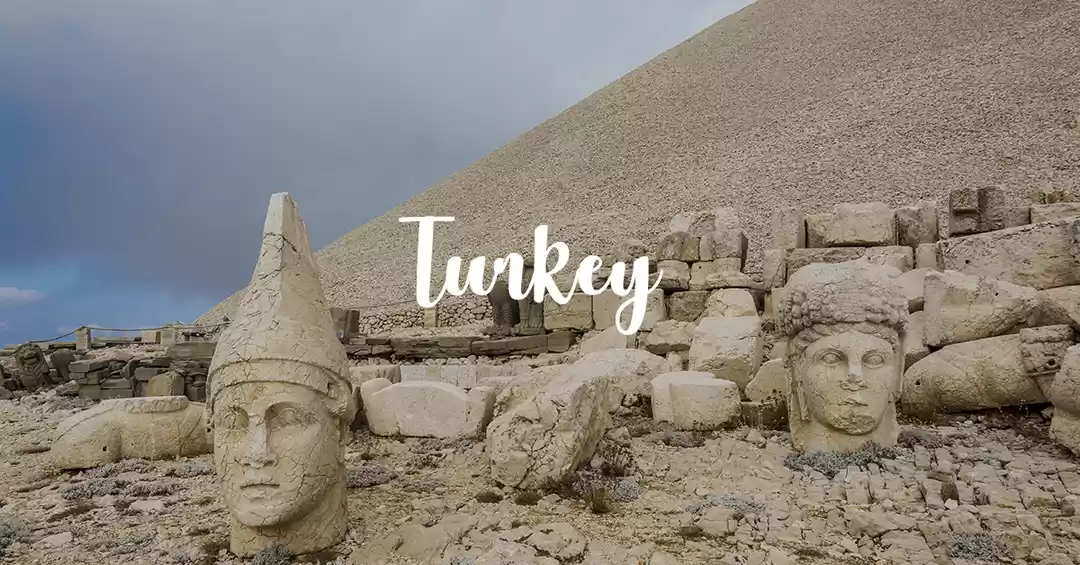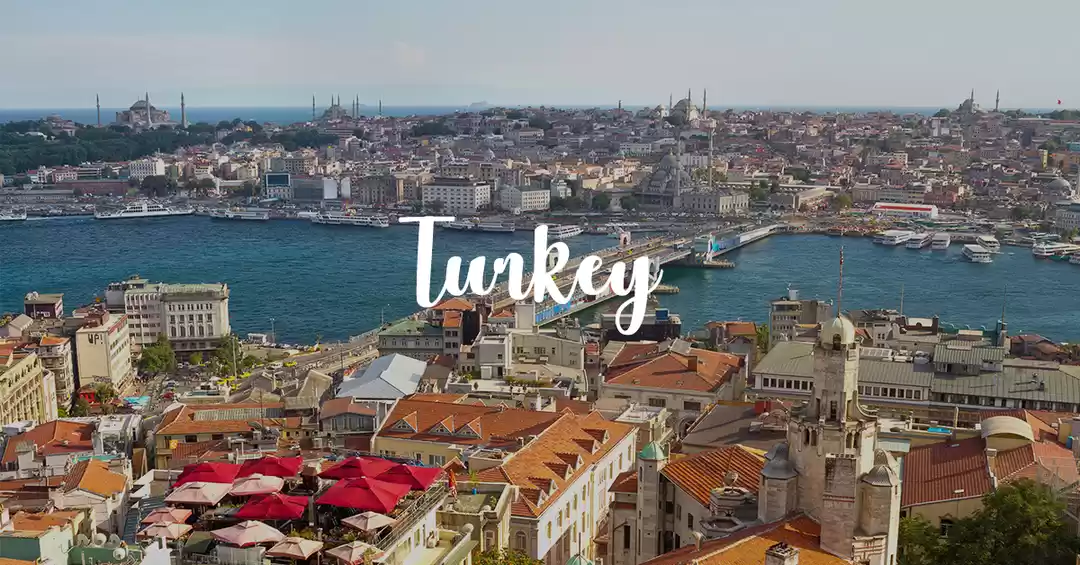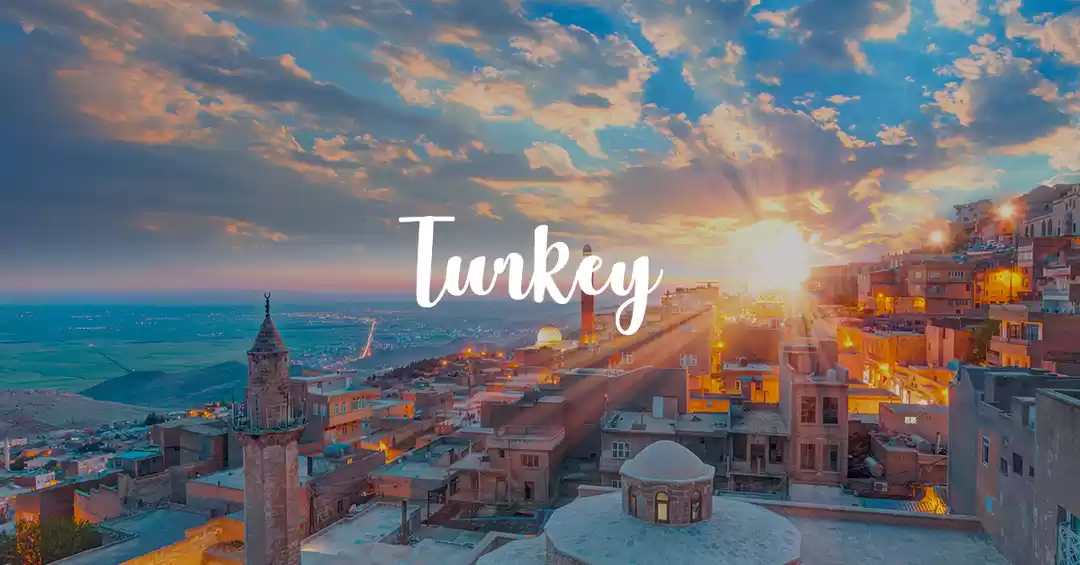

I have a bucket list of places to go in Europe. But somehow Turkey wasn’t ever in that list. The sudden fall of Turkish lira with respect to US dollar, getting a flight ticket dead cheap from Delhi to Istanbul and just the right shoulder season of the month of October, when I wasn't competing with the tourists from the world, these events were as if some astronomical alignment of stars to make me visit the destination I was destined to.The first thing after booking the flight was an investment on Lonely Planet guidebook to Istanbul. Although the book screamed in its every page that just 3 days in Istanbul isn't justice but that's all I had and I dismissed the thought with “how big could Istanbul be”?

The first glimpse-It’s big, rather overwhelmingly huge, crowded enough to intrigue someone from an Indian city, it is the fourth largest city of the world with a population of New York, Chicago and LA put together. I landed at the Asian side of Istanbul and hired a taxi to go to the Fatih area on the European side. I watched keenly through the window of my car as the city swept by. The first glimpse of this epic city, straddling between Europe and Asia was hypnotic. The winding road of the sprawling city, the Black Sea and the Sea of Marmara, connected by the bridge of two continents, the skyline dotted with ethereal blue domes and pencil-thin minarets of 3000 mosques, everything went past by as the taxi negotiated its way in the streets wedged by the sea of people and gridlocked traffic . It took 2 hours and a very frustrated taxi driver to reach the hotel Recital at Fatih area. This area is the beating heart of old Istanbul, and most of the major attraction can be accessed on foot from here.
The city of two continents-My room opened to a view of the Marmara sea with the cityscape flanking it. The speckling blue water was engulfed by cawing seagulls. Few ships can be sighted in distance and the salty air carried the noise of toots and horns from those ships to my small patio. The sea appeared like any other water body till my mind synched the fact that it was no ordinary water body but a geopolitical border drawn on the face of the earth by nature.

Bosphorus cruise- since it was already past sunset and I had reserved my monumental tourism for the next 2 days so decided to use the night for the Bosporus dinner cruise. The cruise began with some average performances, so I decided to sit on the upper deck. The view from the top was amazing and as the 4-hour cruise started to conclude the performances gained interest and momentum.

By the time I stepped out of the ship my mind became a heady mix of oriental belly dance, whirling dervishes and jingles of tambourine from the Turkish song that lingered on for quite a while.
The bustling city- the next morning as I walked it was evident, Istanbul was not that perfect European city where people, buildings and life, in general, progressed in an orderly fashion. The city was a bit chaotic, haphazard but had all the paraphernalia needed for an alive city in the wee morning hours.The sky was milky, the weather was moody. Few Turkish flags fluttered in the autumn wind from the patio of the houses. There was garbage waiting to be thrown on the side streets, a Syrian refugee scanning in that trash for some food , Cats crisscrossing the path everywhere, the call of the Sufi style Azaan in the background, some people serenely walking towards the mosque with their prayer rugs and the rest sat on the on the street side cafes, men sipping cays (Turkish tea) and women casually smoking narghile (hookah).


It didn’t fit in the image of any place in Europe I had ever been to, but it wasn’t the typical conservative Muslim country either. People were patriotic but accommodating enough to the refugees, religious, but tolerant enough to not attend each call of the prayer, modest but stylish enough to look trendy and hip. The buildings were Byzantine, Roman Ottoman, and modern. The style varied with each street. At one instance it felt like Via Condotti in Italy with rows of boutique shops the next one like in Egypt with mosques, minarets and bazaars, some more walk and I could see luxurious skyscrapers around 8 lane highways an underwater marmay ( trains) that run beneath the bridges and all the engineering marvels of a modern city. The city felt like a cultural cauldron, a melting pot that mingled and clashed. It truly exhibited that it had been an economic, cultural and historical hub in the past and is not losing its place anytime soon.

The principal monuments- The Topkapi Palace was the 15th-century imperial palace, once home to the Ottoman kings for 400 years. Set overlooking the sea of Marmara it gave a panoramic view of the city. The palace periphery sprawled over 700000 sqm and housed 5000 residents back in the time. The area was divided into a series of courtyards and pavilions dedicated to specific purposes. The palace was packed like sardines with murals, mosaics, mirrors, treasures, and relics. The pure gold details, the stained glass windows, and the blue colored tiles exhibited the wealth and opulence of the erstwhile empire.
Hagia Sofia- once a humble wooden church built by Constantine transfigured to the largest church in the world under the wings of Byzantine empire and morphed into a mosque during the Ottoman rule. In spite of the tumultuous history of destruction and reconstruction of 1500 years, it curiously retained its classic basilica plan and chipped Christian symbols, peeking and gleaming amidst Quranic calligraphy. Just like the rest of Istanbul Hagia Sofia too is as a blend of cultures and a depiction of religious tolerance the Turks learned to practice long ago.
The blue mosque- that mosque that defined the cityscape forever with 5 domes, 6 minarets, and a folklore. The mosque of Mecca was the only mosque that had 6 minarets, so after the construction of Sultanahmet, the Sultan ordered an additional 7th minar to be installed in the Mecca mosque to keep the most revered Muslim place, unparalleled. Such is the scale and history of Sultanahmet. My growing years and for some reason thinking of Istanbul always beckoned the color blue to me.

Maybe that color was eponymous to Byzantine or the iznic blue pottery in its markets and unquestionably it had to do with the lavish blue mosaics that stud the ceilings and walls of the Sultanahmet. My first experience of the inside of a mosque, Covering my head with a blue scarf, entering into a huge hall with swarming tourists yet so quaint and peaceful with nothing but hushed voices. There was something spiritual and mystical about the whole experience.

The Bazaars- Grand bazaar- being from the city of Jaipur I am in love with archaic charms and the hustle of old bazaars, but I was totally unprepared to brace the impact of this half a century old market with mind-boggling 3000 shops, 30000 employees and 300000 daily visitors. It felt like a living museum and somewhat dizzying, to begin with. The labyrinthian 66 alleys had endless stalls of carpets, clothing, ceramicware, hanging lamps and gold jewelry, an array of shops sold exactly similar things.


As my eyes got used to of this riot of color and commotion, I heard a wooing salesman calling me Kareena Kapoor, Marhaba Istanbul!!! My sheer Bollywood patriotism made me stop for a while and at least to look at the colorful pottery he sold, if not buy anything

Most of the shop vendors were hilarious talking in half Turkish, half English trying to insinuate some Hindi words in between which they had just heard from me. I finally bought few rugs, a couple of scarves and souvenir magnet after price negotiations. Haggling is recommended and expected in Grand Bazaar. Its normal to bargain 40-60% off the asking price, satisfying enough to most of we Indians who love the exhilaration of getting the most bang of our bucks.

Spice market is an extension of the Grand Bazar having a range of products that are the local produce. The spices were displayed in an unusual way. The whole spices hung like garland from the ceilings of the shops while the ground spices were arranged in heaps and rows. A myriad of dried flowers, dried fruits and tea claiming all sorts of benefits, from natural Viagra to anti-aging and ailment curing. Teas and Turks are inseparable. The hospitality of the shopkeepers reminded me of the good old days in Indian markets where tea was offered to every customer in queer-shaped cups and people generally sat and congregated over that cup of tea.

Baklava and beyond- dessert for turkey is a ritual, a course to be shared. The streets brimmed with a colorful display of sugary delicacies. A shopkeeper made a generous offer to sample some. The plethoric shop was named Hafiz Mustafa and it advertised its existence from 1864. I quickly grabbed the delightful renderings of Turkish delight and Baklava from the sample plate and soaked in the layers of sugary deliciousness and crunch of dry fruits. Baklava is just the tip of the iceberg. The dessert scene has a vast span in Istanbul. The buffet breakfast in my hotel was nothing short of a sweet shop. From pastries, halva, lokma, locum everything was a part of the breakfast menu and it was not considered criminal in Turkey to eat just sweets for breakfast, thankfully!!.

Istiklal street- my relationship with Istiklal street is like love and hate. The quest of the sophisticated roadside restaurant with some live soothing music to take the day off, as I would, in any European city, succumbed to despair here. On a regular Friday night, this place was like Times Square in New York on a new year’s eve. To merely stand there for a while without brushing up against each other was a task. Packed with a mile long sea of humanity, shopping, eating, begging and club hopping. The rollicking street fair had rows of high fashion boutiques ,old-style shops seedy rooftop bars. grungy student caverns, underground clubs, art galleries, cinemas, and street food vendors. Only if I was a bit prepared and informed to encounter the microcosmic form of Istanbul I could have appreciated its eccentricity more keenly. Nevertheless, this street is one of its kind in the world and is truly Istanbul in its most organic.

Hammam- This conventional Turkish hot bath seemed to be a perfect cure for my weary traveler’s body that trudged through the uphill streets of Istanbul. But this wasn't like any pampering spa baths of Thailand. The whole process of shedding all the inhibitions of nakedness, lying on a marble slab as to await my destiny, rubbed and scoured by the hands of a chunky, chubby woman, in parts felt like a sacrificial ceremony. But Not many places in the world can give the thrill to bath in a 16th-century royal place where the sultans showered. It’s something to try at least once. It may be Slightly rough and tumble in approach but it never hurt, instead I was surprised by how relaxed and clean I felt afterwards and how much I can talk and laugh about it now.

And today as I write about my sensory overloads in Istanbul, the city isn't just about grandeur and past glories. It is pulsating with energy, thriving and building on its own disparate roots while absorbing new influences. I could see it in the skyline, taste it on the table and feel it on the streets. “Istanbul is quirkier than its European cousins”
Frequent Searches Leading To This Page:-
things to do in turkey for couples, adventurous things to do in turkey, turkey family adventure holidays, 5 offbeat things to do in turkey, things to do in turkey for couples, food not to miss in turkey, what is famous in turkey, places to visit in turkey Istanbul, top turkey tour packages with price


















